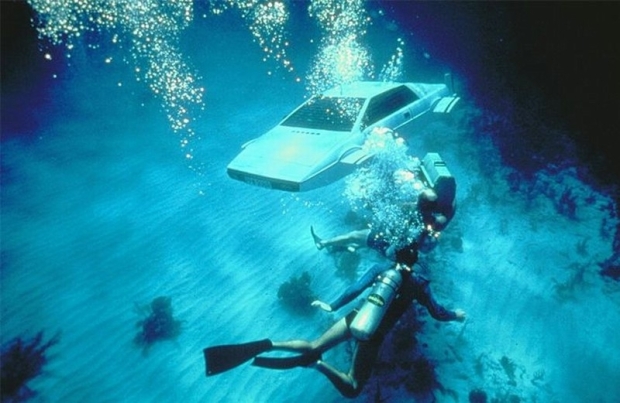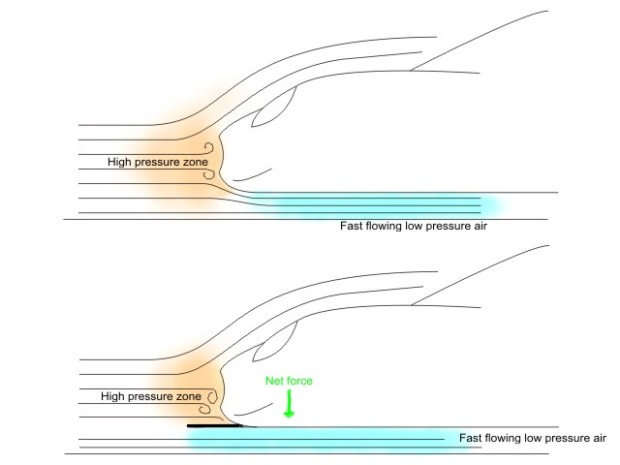After a dispiriting viewing of The Man With The Golden Gun, it’s with deep trepidation I attempted The Spy Who Loved Me, or, as it should be known from now onwards SUBMARINES: Fuck Yeah! Thus continues BlogalongaBond, a Bond film a month until Bond 23.
Dive! Dive!
I suppose scientifically, the most important thing about a submarine is its ability to change its buoyancy. Usually, things either float or sink in water, this floatiness, or buoyancy, is determined by the density of the object. Submarines change their buoyancy by varying the amounts of water and air in their ballast tanks. When the submarine dives, the ballast tanks are filled with water, to return to the surface, air is released into the ballast tanks, it displaces the water in the ballast tanks. The air is stored as compressed gas.
Pushing the limits
If you think about it, there are two factors that would limit how deep a submarine can dive. The first is how much water it can take on in the ballast tanks – when the ballast tanks are full, that’s it, the sub is as heavy as it can possibly get and can go no deeper. The other problem is water pressure. At normal atmospheric pressure, the air pressure inside the submarine equals that outside the sub. As a submarine dives however, the pressure exerted by the water outside exceeds the air pressure inside. If you had a balloon and took it deep underwater, it would shrink because it is being squished by the greater pressure of the water outside it. The same thing happens with submarines. Their hulls are designed to withstand a certain amount of force, beyond these depths, the submarine would be crushed.
The nuclear option
Nuclear submarines were developed in the 1950s, they have massive advantages over battery and diesel powered subs because they don’t need refuelling as much. Indeed, submarines nowadays need never refuel, while electric subs need a recharge every few days. Subs still need to restock for things like food though. this isn’t to say that nuclear powered subs are problem free, some tragic accidents have involved nuclear submarines. While nuclear powered subs can stay at sea for long periods of time, there is one flaw – in fact it is the method by which Q is able to track the lost submarine in the film – its heat signature. The nuclear reactor must be constantly cooled with sea water, so the sub leaves a thermal wake behind it which can be seen with thermal imaging system much like this.
Submarine car
If you’ve always wanted a submarine but don’t have the space (and you have a tonne of money to burn) you could get yourself a car that turns into a submarine. Sadly, Lotus don’t make these. The Esprit does not come with a submarine option. For the film, they used different models in various states of undress, finishing with the modified submarine car. According to Lotus Esprit World Perry Submarines constructed a mini-submarine with 4 electric propellers attached to the back. They couldn’t just modify a Lotus Esprit as there would be huge problems with water getting into the car. Bear in mind what happens in Top Gear anytime they build boat-cars. It wasn’t terribly manoeuvrable either.
As a road car, the design of the Esprit includes elements to help the car stick to the road, things that enhance downforce. It uses the same principles as wings on a plane, but in reverse – the air pressure below the car is lower than the air flowing over the car, pushing the car to the ground. The amount of air flowing above and below the car can be altered by structures on the car, like spoilers and wings and stuff. The designers were concerned that the downforce would have the same effect on the car in the water making the thing sink. Modifications were made at the front and back of the car to ensure this didn’t happen.
If you would like your own submarine car, sQuba exist. It will set you back $1.5 million and no one has taken it to market. The petrol engine has been replaced by three electric motors, one for the back wheels and the other two for the propellers. On land it can reach 75mph, while on water it can reach 4mph and underwater only 2mph. It can dive to 10 metres and can stay underwater for 2 hours.
I really enjoyed Submarines: Fuck yeah, join me next month for Space: *headdesk headdesk*




